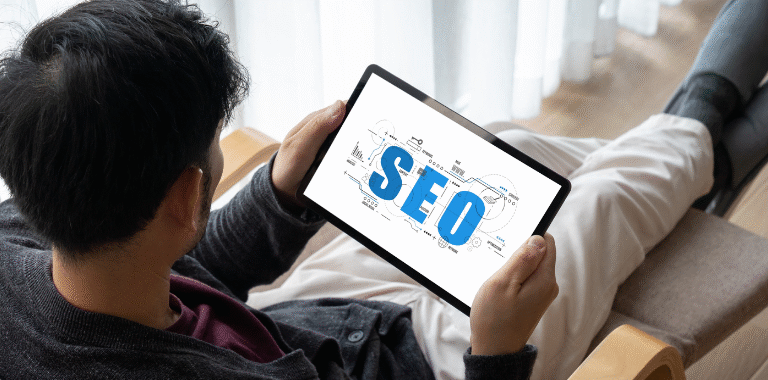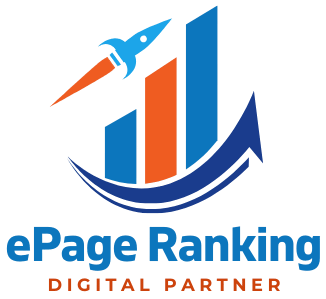
When it comes to ranking on Google and keeping visitors engaged, site speed isn’t just a technical detail—it’s a major player. A slow website frustrates users, increases bounce rates, and signals to search engines that your site isn’t providing a good experience. In contrast, fast-loading pages help boost search visibility, improve user satisfaction, and convert more visitors into customers.
At Epage Ranking, we’ve seen firsthand how optimizing site speed can make a measurable difference in SEO rankings, user engagement, and overall digital performance. Here’s a practical breakdown of how to improve your website’s speed—and why it matters.
Why Site Speed Matters for SEO
Search engines like Google prioritize user experience. A fast site means less waiting, smoother navigation, and more time spent exploring your content. In fact, site speed is a confirmed ranking factor for both desktop and mobile search results.
Here’s what a slow site can lead to:
- Higher bounce rates: Visitors will likely abandon a page that takes more than 3 seconds to load.
- Lower conversion rates: Delayed load times cause hesitation and mistrust, especially for e-commerce sites.
- Reduced crawlability: Search engine bots have limited crawl budgets—slow sites might get indexed less frequently or incompletely.
In short, if your site is slow, you’re not just losing potential customers—you’re losing visibility too.
Benchmark Your Site Speed First
Before you can improve performance, you need to know where you stand.
Use tools like:
- Google PageSpeed Insights
- GTmetrix
- Pingdom Tools
- WebPageTest
These tools provide insights into how fast your pages load and what elements are causing delays. Look out for metrics like:
- First Contentful Paint (FCP)
- Time to Interactive (TTI)
- Largest Contentful Paint (LCP)
- Total Blocking Time (TBT)
- Cumulative Layout Shift (CLS)
Tip from Epage: Always test both desktop and mobile versions—mobile users often experience slower performance due to network limitations.
1. Optimize Your Images
Images are one of the top culprits behind slow websites.
How to fix it:
- Compress images using tools like TinyPNG, ImageOptim, or built-in CMS plugins.
- Use next-gen formats like WebP for smaller file sizes without quality loss.
- Resize images based on display requirements; don’t load a 2000px-wide image where 500px would suffice.
- Implement lazy loading, which defers the loading of images until they are needed (i.e., when the user scrolls to them).
2. Minify CSS, JavaScript, and HTML
Minification reduces the file size of code by removing unnecessary characters (like white spaces, line breaks, and comments) that don’t affect how the browser reads it.
Tools to use:
- CSS Minifier
- JavaScript Minifier
- Plugins like Autoptimize (for WordPress)
This helps reduce the size of assets loaded on every page visit, leading to quicker performance.
3. Use a Content Delivery Network (CDN)
A CDN stores copies of your site on servers around the globe. Instead of making every user connect to your main server (which may be far away), they connect to the nearest server, reducing latency and improving speed.
Popular CDN providers:
- Cloudflare
- StackPath
- Amazon CloudFront
Epage Tip: A CDN doesn’t just speed things up—it also improves security and helps handle traffic surges during marketing campaigns or product launches.
4. Enable Browser Caching
Browser caching allows browsers to store copies of your site’s static assets (like CSS files, images, and logos) locally, so returning visitors don’t have to download everything again.
How to enable:
- Update your
.htaccessfile (Apache servers) - Use cache plugins (WordPress: W3 Total Cache, WP Rocket)
- Set cache-control headers through your hosting panel or CDN
This significantly improves load times for repeat visitors.
5. Choose a High-Performance Hosting Solution
Even the best-optimized site will struggle if it’s hosted on a slow server. Shared hosting environments, while cheap, often suffer from resource constraints.
Consider:
- Switching to VPS or dedicated servers if you have high traffic
- Choosing managed WordPress hosting like Kinsta, SiteGround, or WP Engine
- Monitoring server response times (should ideally be under 200ms)
At Epage Ranking and user experience are top priorities, invest in better hosting.
6. Reduce HTTP Requests
Each file (image, CSS, script) on your page results in an HTTP request. The more requests, the slower the page loads.
Solutions:
- Combine CSS and JS files when possible
- Use CSS sprites to reduce image requests
- Remove unused scripts or plugins
Fewer requests = faster site.
7. Implement GZIP Compression
GZIP compresses your website’s files before they are sent to a browser, reducing file sizes by up to 70%.
How to enable:
- Modify your
.htaccessfile - Enable through your hosting control panel
- Use plugins for WordPress
This improves performance without affecting visual appearance.
8. Optimize Mobile Performance
Since mobile-first indexing is now standard, your mobile site’s speed directly affects SEO.
Key strategies:
- Use responsive design
- Prioritize mobile image compression
- Limit the use of large scripts and plugins
- Avoid heavy popups or large headers
Pro Insight from Infobahn: Check your site speed over a 3G connection to simulate real mobile performance.
9. Eliminate Render-Blocking Resources
Render-blocking resources prevent the browser from showing content until certain CSS or JS files are loaded.
To fix:
- Defer non-essential JS
- Inline critical CSS
- Load scripts asynchronously
PageSpeed Insights will highlight which scripts are blocking your content—addressing these can significantly improve perceived performance.
10. Regular Monitoring and Maintenance
Speed isn’t a one-time fix. As you update your site, add new plugins, or redesign pages, performance may change.
Best practices:
- Run monthly audits
- Check speed before and after plugin/theme updates
- Clear your cache frequently
- Set performance KPIs for web development teams
At Epage Ranking, we provide performance monitoring as part of our ongoing support for clients, ensuring their SEO momentum continues without setbacks.
Final Thoughts: Why Infobahn Prioritizes Site Speed
A fast website isn’t just about Google—it’s about your users. Speed builds trust, encourages engagement, and supports conversions. For brands that want to grow online, site speed is a foundation, not an afterthought.
If you’re unsure where to begin or need expert help, Epage Ranking offers end-to-end support—from speed audits to full-stack optimization. We help businesses in the UAE and beyond turn slow-loading websites into high-performing digital assets.
Ready to speed up your site and boost your SEO?
Contact Epage Ranking today and let us help you build a faster, more effective online presence.
















